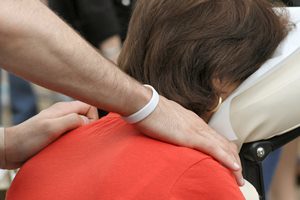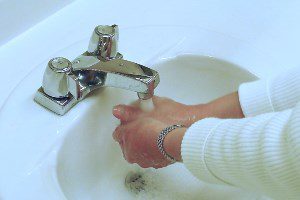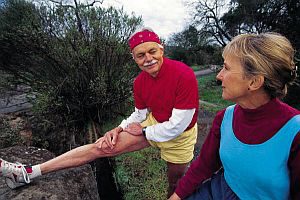Auto Accident Folklore—Being Thrown Clear and Bracing for Impact

You have no doubt overheard someone at work or at a party telling his friends that he never wears a seat belt—and that he has some really good reasons. The story usually goes something like this: He heard from a buddy he knows that a friend of a friend who was not wearing a seat belt had a bad car accident and walked away from it because he was thrown clear of the car. This is one of the most pervasive car safety myths out there. And if you believe this myth, you could be setting yourself up for serious injury or death.
Although there are a small handful of cases in which someone has survived a car accident after being thrown from the car, this is a very rare occurrence. In fact, you actually have a 25 percent greater chance of being killed if thrown from the car. Just consider the physics of the situation. The force applied to your body when a collision occurs can be strong enough to propel you 150 feet, which is equivalent to about 15 car lengths. And you would not just be flying gracefully through the air either. First, your body may go crashing through the windshield, it may scrape along the rough asphalt for yards, and then you could end up getting crushed by your own car or someone else’s. This is not to mention the other objects you may be hurled into when flung from the car. Statistics from a study performed by researchers at James Madison University show that the proper use of a seat belt reduces serious injuries from traffic accidents by 50 percent and fatalities by 60 to 70 percent. It’s a simple thing that can protect your health and save your life—wear seat belts.
Another common myth is that bracing for impact causes more damage to your body, and that it’s best to remain relaxed. Of course, actually having the ability to choose one way or another about bracing has a lot to do with how much time you have before impact. Many accidents occur in the blink of an eye, so suggesting that someone should “stay relaxed” has really limited practical value. However, the most current science indicates that if you have time, bracing for impact will likely reduce the amount of injury, particularly to tendons and ligaments.
One of the most common types of injury from an auto accident is whiplash, which occurs in about a third of all collisions. If you see a car approaching in your rear view mirror that you believe is going to collide with yours, the best thing to do is to press your body against the seatback, with your head pressed firmly against the head rest. This way you are less likely to suffer injuries to the ligaments in your neck, as your head will not be slammed back against the head rest, then flung forward.
Auto accidents are never pleasant, but by knowing the facts about auto safety you can help reduce your chances of sustaining a serious injury. If you do end up in an accident, it’s always a good idea to get a medical evaluation promptly, even if you think you haven’t suffered any significant injuries. Many auto injuries take time for their symptoms to become apparent or significant enough for victims to recognize how badly they may have been hurt. By the time the symptoms are obvious, the victim and his or her doctor may have lost a valuable opportunity to treat the underlying injuries. Please call or visit the office if you or someone in your family has recently been involved in an auto accident.
 Learning the risk factors of sciatica can help you minimize your risk of developing it. A recent study sheds light onto what makes you more likely to develop sciatica.
Learning the risk factors of sciatica can help you minimize your risk of developing it. A recent study sheds light onto what makes you more likely to develop sciatica. People are becoming increasingly aware of the dangers that can result from the overuse of antibiotics. When antibiotics were first discovered in the early 20th century, researchers believed that they had found the key to conquering many deadly diseases. Since that time, antibiotics have certainly helped to cure diseases that once wiped out large parts of the population. However, there is growing evidence that antibiotics are now being used too frequently, and that they are often being used in inappropriate circumstances. This has led to many previously curable diseases becoming antibiotic-resistant, which means that a cure now requires the use far stronger antibiotics. In fact, some diseases have now become resistant to nearly all antibiotics. It is obvious that if antibiotic use continues in this way, we may have a major health crisis on our hands.
People are becoming increasingly aware of the dangers that can result from the overuse of antibiotics. When antibiotics were first discovered in the early 20th century, researchers believed that they had found the key to conquering many deadly diseases. Since that time, antibiotics have certainly helped to cure diseases that once wiped out large parts of the population. However, there is growing evidence that antibiotics are now being used too frequently, and that they are often being used in inappropriate circumstances. This has led to many previously curable diseases becoming antibiotic-resistant, which means that a cure now requires the use far stronger antibiotics. In fact, some diseases have now become resistant to nearly all antibiotics. It is obvious that if antibiotic use continues in this way, we may have a major health crisis on our hands. In this age of mobile devices and smartphones, more and more patients are being diagnosed with neck pain associated with looking down at a screen.
In this age of mobile devices and smartphones, more and more patients are being diagnosed with neck pain associated with looking down at a screen.  Why “low impact” cardio exercises? Imagine reaching your “golden years” with a buff beach body only to be told that you can’t jog or run anymore because your knee cartilage has been worn thin or you have damaged vertebrae. The last thing you want to do is ruin your body while trying to stay in shape. Here we present some good low impact cardio exercises that can help you maintain a healthy cardiovascular system without causing damage to your musculoskeletal system.
Why “low impact” cardio exercises? Imagine reaching your “golden years” with a buff beach body only to be told that you can’t jog or run anymore because your knee cartilage has been worn thin or you have damaged vertebrae. The last thing you want to do is ruin your body while trying to stay in shape. Here we present some good low impact cardio exercises that can help you maintain a healthy cardiovascular system without causing damage to your musculoskeletal system. Take a look inside the average American’s medicine cabinet and you are likely to find out-of-date prescription medications, half-used bottles of lotion, some painkillers and a box of Band-Aids. Some of these are useful, and some should have been disposed of long ago. Along with the annual maintenance that you perform on your smoke detector, your medicine cabinet should have a thorough evaluation and clean-out once a year as well.
Take a look inside the average American’s medicine cabinet and you are likely to find out-of-date prescription medications, half-used bottles of lotion, some painkillers and a box of Band-Aids. Some of these are useful, and some should have been disposed of long ago. Along with the annual maintenance that you perform on your smoke detector, your medicine cabinet should have a thorough evaluation and clean-out once a year as well. What do you think about when you hear the word “massage”? If you’re like many people, you associate massage with a day of pampering at an exclusive resort spa in the mountains or at the beach. But if that’s the first picture that comes to mind, you might be missing something very, very important. That something is the therapeutic value of massage—the ways that massage can actually improve your health and well-being.
What do you think about when you hear the word “massage”? If you’re like many people, you associate massage with a day of pampering at an exclusive resort spa in the mountains or at the beach. But if that’s the first picture that comes to mind, you might be missing something very, very important. That something is the therapeutic value of massage—the ways that massage can actually improve your health and well-being. As summer turns to fall, lots of people (children and adults alike) will be spending more time inside and in closer proximity to one-another. Washing your hands is something simple we can all do to keep our schools, workplaces and homes just a little bit healthier. In fact, it’s actually been identified by the US Centers for Disease Control and Prevention (CDC) as the single most effective way to prevent the spread of communicable diseases.
As summer turns to fall, lots of people (children and adults alike) will be spending more time inside and in closer proximity to one-another. Washing your hands is something simple we can all do to keep our schools, workplaces and homes just a little bit healthier. In fact, it’s actually been identified by the US Centers for Disease Control and Prevention (CDC) as the single most effective way to prevent the spread of communicable diseases. It’s no secret that some jobs are just more physically demanding and more dangerous than others. Some of the most challenging ones are obvious—combat roles in the military, fire and rescue, heavy construction and deep sea fishing are just a few that come to mind. However, when it comes to non-fatal musculoskeletal injuries, the statistics tell a very different story about occupational health and safety and about who’s most likely to get hurt on the job.
It’s no secret that some jobs are just more physically demanding and more dangerous than others. Some of the most challenging ones are obvious—combat roles in the military, fire and rescue, heavy construction and deep sea fishing are just a few that come to mind. However, when it comes to non-fatal musculoskeletal injuries, the statistics tell a very different story about occupational health and safety and about who’s most likely to get hurt on the job. Studies have shown that one of the best ways to stick to your fitness regime is to have a reliable fitness partner. Being a fitness buddy means that someone else is counting on you to make them accountable for their workout, keep them inspired and ensure that they are not alone in their quest for fitness. To be a great fitness buddy you just need to keep a few basic guidelines in mind:
Studies have shown that one of the best ways to stick to your fitness regime is to have a reliable fitness partner. Being a fitness buddy means that someone else is counting on you to make them accountable for their workout, keep them inspired and ensure that they are not alone in their quest for fitness. To be a great fitness buddy you just need to keep a few basic guidelines in mind: